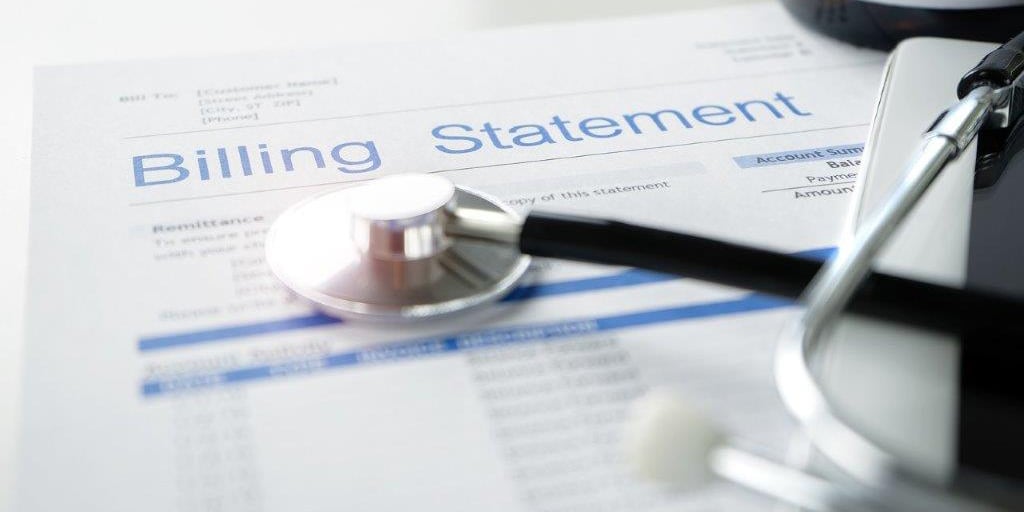4 min read
Start Preparing Now for the No Surprises Act, Effective January 1, 2022
By: Sue York on Sep 20, 2021 1:33:58 PM

In July 2021, the Department of Health and Human Services, the Office of Personnel Management, the Department of Treasury, and the Department of Labor released an interim final rule with comment period to implement the No Surprises Act, which goes into effect in January 2022.
The No Surprises Act protects insured patients from unknowingly receiving surprise medical bills from out-of-network providers or facilities in a variety of emergency and non-emergency settings. To ensure compliance with the new rule, healthcare leaders within the revenue cycle must familiarize themselves with the requirements and ensure processes are in place to uphold each component of the law.
What is the No Surprises Act?
Under the No Surprises Act, insurance plans will be required to cover emergency care when it is provided to plan members by:
- Out-of-network providers
- Out-of-network facilities
- Out-of-network air ambulance services
In addition, insurance plans will be required to cover non-emergent care provided by out-of-network providers or facilities unless patients are provided with proper Notice and Consent as outlined in the rule.
In all of the above scenarios, the patient may not be held responsible for an amount that “exceeds the cost-sharing requirement for such services”. Providers may not balance bill patients for more than this amount.
When Notice and Consent Requirements are met, however, out-of-network providers and facilities may charge patients for non-emergent or post-stabilization care.
Notice and Consent Requirements
Because the primary focus of the No Surprises Act is to protect patients from unknowingly receiving surprise medical bills, providers will be allowed to charge patients for non-emergency care provided by out-of-network providers and/or facilities when certain conditions are met:
- Patient is provided with written notice and consent at least 72 hours in advance of a scheduled appointment when possible (or at least 3 hours prior to services when notice and consent documents must be furnished on the same day)
- Documents provided to the patient must include a good faith estimate of the amount the beneficiary/enrollee/participant may be charged for items and services furnished by the out-of-network facility or out-of-network providers.
- Patients must be provided with a signed copy of Notice and Consent (Further details regarding the information that must be included within each of these documents can be found on pages 401-403 of the interim final rule.
- In the case of an out-of-network provider at an in-network facility, the notice must include a list of in-network providers at the facility to whom patients may be referred at their request.
- In the case of post-stabilization care, the treating physician must first determine that the patient is “able to travel using nonmedical transportation or nonemergency medical transportation to an available participating provider or facility located within a reasonable traveling distance.” This ensures the patient is stable and aware enough to voluntarily give consent without being under “undue influence or duress.”
When Notice and Consent Do Not Apply
According to the law, providers may not balance bill patients for any of the following ancillary services, to which the Notice and Consent exception does not apply—
- Items and services related to emergency medicine, anesthesiology, pathology, radiology, and neonatology, whether provided by a physician or non-physician practitioner;
- Items and services provided by assistant surgeons, hospitalists, and intensivists;
- Diagnostic services, including radiology and laboratory services; and
- Items and services provided by a nonparticipating provider if there is no participating provider who can furnish such item or service at such facility.
Providers are also prohibited from balance billing when unforeseen, urgent medical needs arise during the provision of a service for which a provider obtained consent.
What Does This Mean for Revenue Cycle Leaders?
It’s time to assemble a team charged with accountability for planning and implementing the necessary changes. These individuals should be knowledgeable about the new law and remain up to date with any subsequent regulatory updates or legislation.
Once familiar with the law, this team may begin analyzing how current revenue cycle processes can be updated to fulfill the law’s requirements. For example, their to-do list may include items like:
- Develop Notice and Consent documents in accordance with HHS guidance
- Identify touch points at which patients may be given Notice and Consent, and train appropriate staff members (e.g., schedulers, registrars, ED nurses or case managers, etc.)
- Identify a process for calculating “good faith estimates”
- Consider price estimation or transparency tools to expedite the process of providing good faith estimates
- Ensure protections are in place in the billing department to prevent patients from being balance billed (i.e., charged beyond the appropriate cost-sharing amount) for emergency care
- Ensure protections are in place to prevent patients from being billed for any out-of-network care unless a Notice and Consent was provided and signed in accordance with the law.
The information above is a great jumping-off point for your organization’s efforts in this area, however it is not exhaustive. Be sure to read the law carefully and in its entirety while working closely with revenue cycle partners like OS, inc. and efficientC. While we are not a legal entity or authority, we are here to help and look forward to working with our clients as they navigate the new requirements.
If you if have questions or need any assistance, feel free to reach out to us here.
Do not forget to subscribe to Revenue Cycle Matters for healthcare billing best practices and industry tips!
Related Posts
News - Latest Rules & Legislative Updates
What to Watch in 2020
As is usually the case at the beginning of a year, health care providers can...
News - Illinois Medicaid NIPS Billing Update
Effective July 1, 2020 Illinois Medicaid transitions Non-Institutional Provided Services (NIPS) to...
Professional Coders: 6 Lessons Learned from March Madness
Today marks the first official day of March Madness. Basketball fans rejoice!
Brackets are still...
